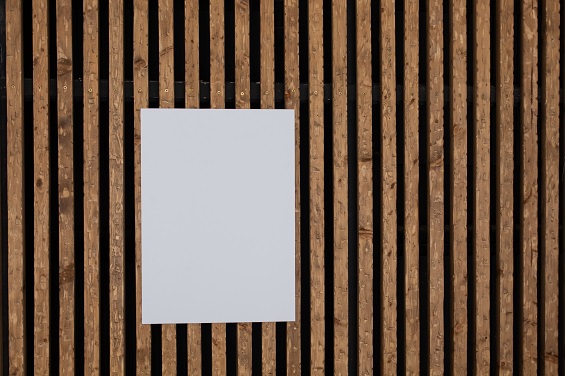Insulation is an essential element of any building, whether it is a commercial space or a residential home. It plays a crucial role in keeping the indoor temperature comfortable and reducing energy costs. However, with the numerous insulation options available in the market, choosing the right one for your property can be a daunting task.
From traditional materials like fiber glass to newer options such as spray foam, each type of insulation has its own unique properties and benefits. The key lies in understanding these options and selecting the one that best fits your needs and budget. In this complete guide, we will demystify the world of insulation and provide a comprehensive overview of various types of insulation, their features, and their pros and cons.
Whether you are building a new structure or looking to upgrade the insulation in your existing space, this guide is designed to help you make an informed decision and create an energy-efficient and comfortable environment. So, let’s dive in and explore the world of insulation together.
Understanding insulation: types and benefits.
One of the most common types of insulation used in buildings is fiberglass insulation. Made of tiny glass fibers, it is effective in reducing heat transfer and providing soundproofing. Another popular option is cellulose insulation, which is made from recycled paper and can be blown into walls and attics to create a seamless barrier against heat loss.
For those concerned about environmental impact, there are also eco-friendly options such as sheep’s wool and cotton insulation. The benefits of insulation go beyond just reducing energy costs, as it also helps regulate temperature, improves indoor air quality, and reduces noise pollution. Understanding the different types of insulation available and their unique benefits is crucial in making an informed decision for a well-insulated and energy-efficient building.
Fiber glass insulation: affordable and versatile.
Another popular and widely-used type of insulation is fiberglass. This type of insulation is made of tiny fibers of glass, making it lightweight and easy to install. One of the biggest advantages of fiberglass insulation is its affordability, making it a top choice for many homeowners and builders.
It is also extremely versatile, as it can be used in various areas of a building, from walls and attics to floors and ceilings. Additionally, fiberglass insulation is known for its excellent thermal efficiency, helping to regulate indoor temperatures and reduce energy costs. Its soundproofing capabilities also make it a great choice for reducing noise pollution in a building.
With its affordability and versatility, fiberglass insulation is a top choice for many looking to improve their building’s energy efficiency and overall comfort.
Spray foam insulation: superior insulation capabilities.
While fibreglass insulation may be a common choice, there is another type of insulation that offers even better performance: spray foam insulation. Made of polyurethane, spray foam is applied as a liquid and expands and hardens into a solid, creating a seamless and airtight barrier that provides superior insulation capabilities.
This type of insulation is known for its exceptional R-value, which measures the insulation’s ability to resist heat transfer. In fact, spray foam has one of the highest R-values of any insulation material on the market, making it an ideal choice for those looking to maximize energy efficiency in their homes or buildings. Additionally, spray foam insulation can also help with moisture control and soundproofing, making it a comprehensive solution for insulating any space.
Cellulose insulation: eco-friendly and efficient.
Another eco-friendly and efficient insulation option is cellulose insulation. Made from recycled paper products, such as newspapers and cardboard, cellulose insulation is a great choice for those looking to reduce their environmental impact. It is treated with non-toxic chemicals to make it fire-retardant and insect-resistant.
Additionally, cellulose insulation has a higher R-value than fiberglass insulation, making it more efficient at keeping heat in during the winter and out during the summer. It is also a great option for soundproofing, as it can reduce noise transmission by up to 80%. Overall, cellulose insulation is a cost-effective and sustainable choice for insulating any space.
Reflective insulation: maximizing energy efficiency.
Another insulation option to consider for maximizing energy efficiency is reflective insulation. Made from materials like aluminum foil, it works by reflecting heat back towards its source, instead of absorbing it. This makes it a great choice for hot climates, where it can help keep buildings cool by reflecting sunlight away.
Reflective insulation can also be combined with other types of insulation to provide even greater energy efficiency. It is a popular choice for attics and crawl spaces, and can be easily installed with staples or adhesive. However, it may not be as effective in colder climates, where heat retention is the main concern. Overall, reflective insulation is a versatile and cost-effective option for those looking to improve energy efficiency in their homes or buildings.
In conclusion, understanding the different types of insulation options available can help you make an informed decision when it comes to insulating your home or building. Whether you choose fiberglass, cellulose, spray foam, or another option, it’s important to consider factors such as R-value, cost, and environmental impact.
By working with a professional and considering all aspects, you can ensure that your insulation choice will provide the best results and energy efficiency for your space. Keep in mind that proper installation and maintenance are also crucial for the long-term effectiveness of your insulation. So, don’t hesitate to reach out to an experienced contractor for assistance in achieving optimal insulation for your property.









